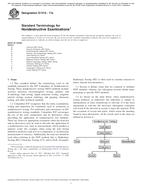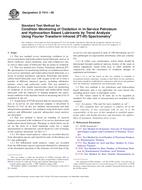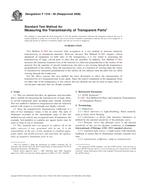1.1 This test method describes a procedure for determining the partitioning of organic chemicals between water and soil or sediment. The goal is to obtain a single value which can be used to predict partitioning under a variety of environmental conditions from the measurement of sorption coefficients for specific solids.
1.2 Sorption represents the binding process of chemicals to surfaces of soils or sediments through chemical, or physical, or both interactions.
1.3 The sorption of nonpolar organic chemicals, and to some extent polar organic chemicals, is correlated with the organic carbon content of the sorbing solid. Charged inorganic and organic molecules may behave differently, and some other property, such as, cation exchange capacity, clay content, or total surface area of sorbing solids, may influence sorption. Hydrous metal oxides of iron and aluminum may significantly affect sorption in sediments. In order to provide a sorption coefficient that is useful for a wide range of soils and sediments, the coefficient is based on organic carbon content. This approach, however, will not apply to all chemicals or all soils and sediments. In cases where it does not apply, the investigator may need to seek other methods of relating sorption to the properties of the chemical, soil, or sediment.
1.4 It is possible that, in addition to organic carbon, sorption is correlated with the total surface area of sorbing solids. This may be particularly important with solids having organic carbon contents so low that sorption to inorganic surfaces is significant in comparison to sorption by organic material. In such a case, inclusion of the total surface area into the sorption calculation may be useful. For further information on this subject see Ref (1).
1.5 Equilibrium sorption coefficients are determined. It is recognized that equilibrium conditions do not always exist in environmental situations, but sorption equilibria values are necessary for making generalizations about environmental partitioning.
1.6 Studies are conducted preferably with an analytical or technical-grade chemical. Mixtures are used only if analytical methods allow measurement of individual components of interest in the mixture. Good laboratory procedures must be followed to ensure validity of the data.
1.7 This standard does not purport to address all of the safety problems, if any, associated with its use. It is the responsibility of the user of this standard to establish appropriate safety and health practices and determine the applicability of regulatory limitations prior to use.
Product Details
- Published:
- 02/01/2008
- Number of Pages:
- 9
- File Size:
- 1 file , 120 KB
- Redline File Size:
- 2 files , 240 KB


